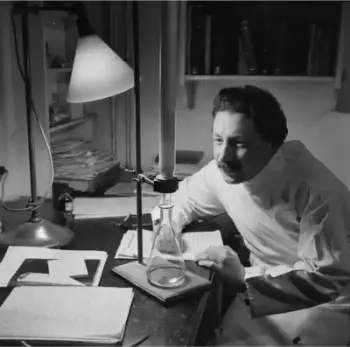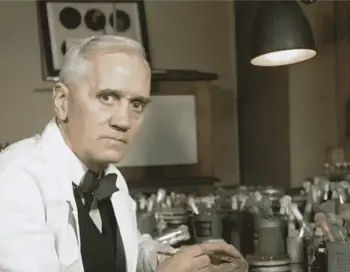

Use the following menu to find a section you want to look at.
On a cellular level, we have cells in our bloodstream that help protect us. These are called white blood cells. There are several different types, but for this purpose we are focusing on two :
Phagocyte: this will try and destroy all unknown pathogens in our body that are causing infection. There are two types of phagocyte - microphage (neutrophilic) and macrophage (monocyte).
Lymphocyte: this creates specific antibodies to fight off infection.
The phagocyte is like the Pac Man of the immune system. It literally engulfs pathogens and consumes them until they are gone. They are given instructions from the lymphocyte, which markes the pathogen that needs to go.
A vaccine is an injection or imprint of a dead culture that we take to prevent us getting a disease or illness. To make this a bit simpler, they take some of the virus or infection that has already died, and deconstruct the DNA from it, and then try and make something that will react to it to destroy it.
A pathogenA microorganism that causes a disease. has antigens on it, so when it enters our system, the lymphocyte with the right type of antibody finds them, releases the antibody from the lymphocyte and attaches them to the antigens on the pathogen.
As a result of this, the antibody destroys the pathogen. How?
There are several ways an antibody works:
There are about 30% of our white blood cells that are lymphocytes, and of these, no two are the same. Why? Because they are each fitted with different antibodies. When we have a foreign body enter our system, each lymphocyte goes into action to find the right antibody for the antigen on the pathogen. Kind of like a Cinderella story where the prince is looking for the right person in the missing shoe.
The Phagocyte. The shovel of the white blood cell. The mop. It will eat up anything in its path (hence me referencing Pac Man previously), and will do this all day long to clear up the pathogen.
What it doesn't do is create any antibodies. So in effect, when a pathogen first enters our body, the phagocyte will still work against it, consuming whatever pathogen is there, but it might not actually have much effect until the right lymphocyte has worked on it.
The following still is from a video on white blood cells, with the following details:
Please click on the image to view the video.
Well, let's start with the first one - our skin. This is all over our body, and holds everything within. It's part of the Integumentary system that maintains the outside of our body, moving dirt, allowing us to sweat, and more.
But it also works with the immune system as a line of defence. This is the first place that a foreign body will go. That bacteria you've just touched with your hand from a surface will try and enter your body through the skin first. This is because a pathogen needs to enter a body to replicate on a cellular level.
If a pathogen can't do this, then what does it do?
It finds a hole. Literally. Your body has a few to go in. Some we're not mentioning here. They are known as orifices, and commonly, your mouth, nose and ears are the holes we are talking about.
So, the pathogen doesn't find any luck with your skin, as it is quite tightly knit, and doesn't allow much to get through. Plus, it has been hot today, so you've sweat, and the sweat helps to carry away some bacteria from your skin - it drips off you.
When a pathogen enters your body through the mouth or nose, it will enter the trachea. This is the windpipe, and it is covered in a thin layer of mucus, that attracts these foreign bodies. So, when we breathe in and out, the mucus catches the pathogens and holds on to them.
Small hair-like structures called cilia are on the walls of the trachea, and they help to move the mucus back up the windpipe to your mouth. The cilia work in a rhythmic movement to move upwards from the bronchials and trachea. Sounds disgusting, right?
Well, this is where your saliva and the mucus meets at the back of the throat, and you will swallow it. It then travels into your digestive system, and specifically, your stomach. When it reaches your stomach, this mucus and the pathogens come face to face with bile. In bile, you have hydrochloric acid, which on the pH scale is a 2, meaning it's very acidic.
The stomach acids help to break down the pathogens and mucus, effectively killing it. But there is another line of defence we haven't yet discussed.
As well as your mouth and nose allowing foreign bodies to enter your body, you also have eyes. They can also let in substances that might have a malevolency. To combat this, we have a reaction in form of tears. When we cry, we release any substances that might be there as well. In tears is an enzyme called lysozyme. This helps the eye to combat any malevolency surrounding it. You can also find lysozyme in mucus.
So, when you cut an onion, and you start to cry, this is because your eye has a reaction to the sulfur in the onion being released.
When you are feeling ill, this is a good sign, as your immune system is working to resolve the issues in your body. You may have already had the rogue pathogen or illness in your body for a few days, and this ill-feeling is the result of your body working to fix it.
If a pathogen doesn't get destroyed by one of the first two lines of defence, it then uses the third line of defence to eradicate it. This is the use of white blood cells, and more precisely, lymphocytes. They will create antibodies that attach to antigens of the pathogen.
The antibody is a marker that signals to the phagocyte so that it knows what to ingest. This process is called phagocytosis.
An antigen is a body of cells that enter our systems and create an immune response. It can be classed as two different types:
So, when a pathogen is inside our body, it will create small amounts of toxins, which could be lethal to us over time, and are poisons that we don't need in oue body. Imagine, you have a spot on your arm. For a few days, you'll get irritant to it, notice it, see that it's red and rising up. Then, a white head appears. This is the toxins from the spot. You could pop that spot, easily (we all do it), and it will clear up in a day or two. If you were to leave it, it will release more and more toxins into your body, the white head will appear larger, and more of your arm will start to go red. Your immune system will eventually work on it, and remove it naturally, but at this point, I would say we all pop the spots, to help remove the toxins.
An antitoxin is created while the white head shows itself, by the white blood cells. This will help to combat the spot, and will stop the toxin making us feel ill.
The following still is from a video on the immune system, with the following details:
Please click on the image to view the video.
While the first two lines of defence (our skin, hair, mucus) are capable of preventing us from getting ill to some degree, they are not able to specifically fight off certain infections. This is what is called a non-specific line of defence.
Specific lines of defence include the phagocytes and lymphocytes. They specifically battle the infections that enter the body and that make us ill.


A German scientist, Chain helped Alexander Fleming to develop penicillin, and helping to make it able to be used more widspread.


Another scientist working with Fleming to help develop penicillin for the wider world.

"The only true wisdom is in knowing you know nothing."